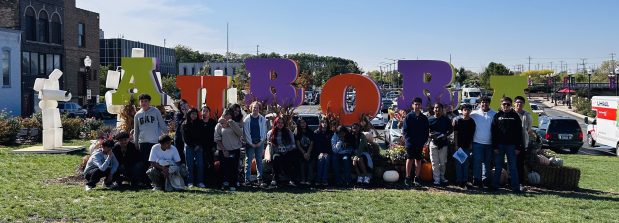Indian Prairie School District 204 is considering a $15.1 million property tax levy increase to support its operations, officials announced Monday.
The owner of a home with an assessed market value of $450,000, which is about average for the district, would see an estimated $215 increase in total property tax payments, which is an estimated 3.16% increase, Chief School Business Official Matt Shipley told the district’s Board of Education at its meeting on Monday.
The board did not vote on the levy at Monday’s meeting, and Shipley’s presentation was for information only. He said the board is expected to formally consider the new levy at its Dec. 16 meeting.
The property tax levy increase is equal to the rate of inflation as measured by the U.S. Bureau of Labor Statistics’ Consumer Price Index plus new construction, which is the maximum amount the district is allowed to raise its operational property tax levy under state law, according to Shipley.
The Consumer Price Index for 2023 was 3.4%, and the district is anticipating an additional 1.1% increase because of new construction, he said.
However, despite a rising levy, increases in property values have led to a declining tax rate, according to Shipley. He said the rate is set to be the lowest it has been since before the Great Recession.
The quadrennial reassessment in 2023 saw significant increases in property values, particularly residential values, which shifted the tax burden more toward residential properties and away from commercial or industrial properties, Shipley said. Some residents saw “significant tax increases” because of this reassessment and shifting of tax burden, he said.
Since 2024 is a standard revaluation year, there likely will be more consistent tax increases, according to Shipley.
“That’s not a result necessarily of the levy of the district, but in how that levy was spread out due to some significant property value increases,” he said.
The levy is also expected to be adjusted down by the counties collecting property taxes on behalf of Indian Prairie School District 204 once the final new property amount is determined, Shipley said.
Property tax accounts for nearly 80% of the district’s funds, with the rest coming from the federal and state governments, according to Shipley. Federal and state funding is inconsistent and is not keeping up with cost increases, which is why the tax levy increase is needed, he said.
Even the state recognizes that Indian Prairie School District 204 is underfunded, based on the Illinois State Board of Education’s Evidence-Based Funding Distribution Calculation, which says the district has only 85% of the local funding it needs to adequately educate its students, Shipley said.
“Therefore, we do feel justified in continuing to extend the levy close to CPI so we continue to provide as close to an adequate level of funding as possible,” he said.
Voters recently approved a proposal by the district to sell up to $420 million in bonds, but these funds can only be used for improvements to the district’s facilities, not for operational costs.
The tax rate that goes to pay off the district’s loans is expected to stay flat even as the district issues bonds because it will only take out new debt when it pays off old debt, according to Shipley. His presentation said that all existing bonds are set to be paid in full by the end of 2026.
The Indian Prairie School District 204 Board approved its $435 million operating budget for the 2024-25 school year back in August. The budget was $12 million higher than the year before, but the district still needed to make cuts because of expiring COVID-19 era pandemic relief funds, according to past reporting.
That budget is expected to be amended early in February 2025 to account for the bonds recently approved by voters, Shipley said on Monday. Also in February, Shipley is set to present a five-year budget forecast to begin the budgeting process for the next school year.
rsmith@chicagotribune.com



